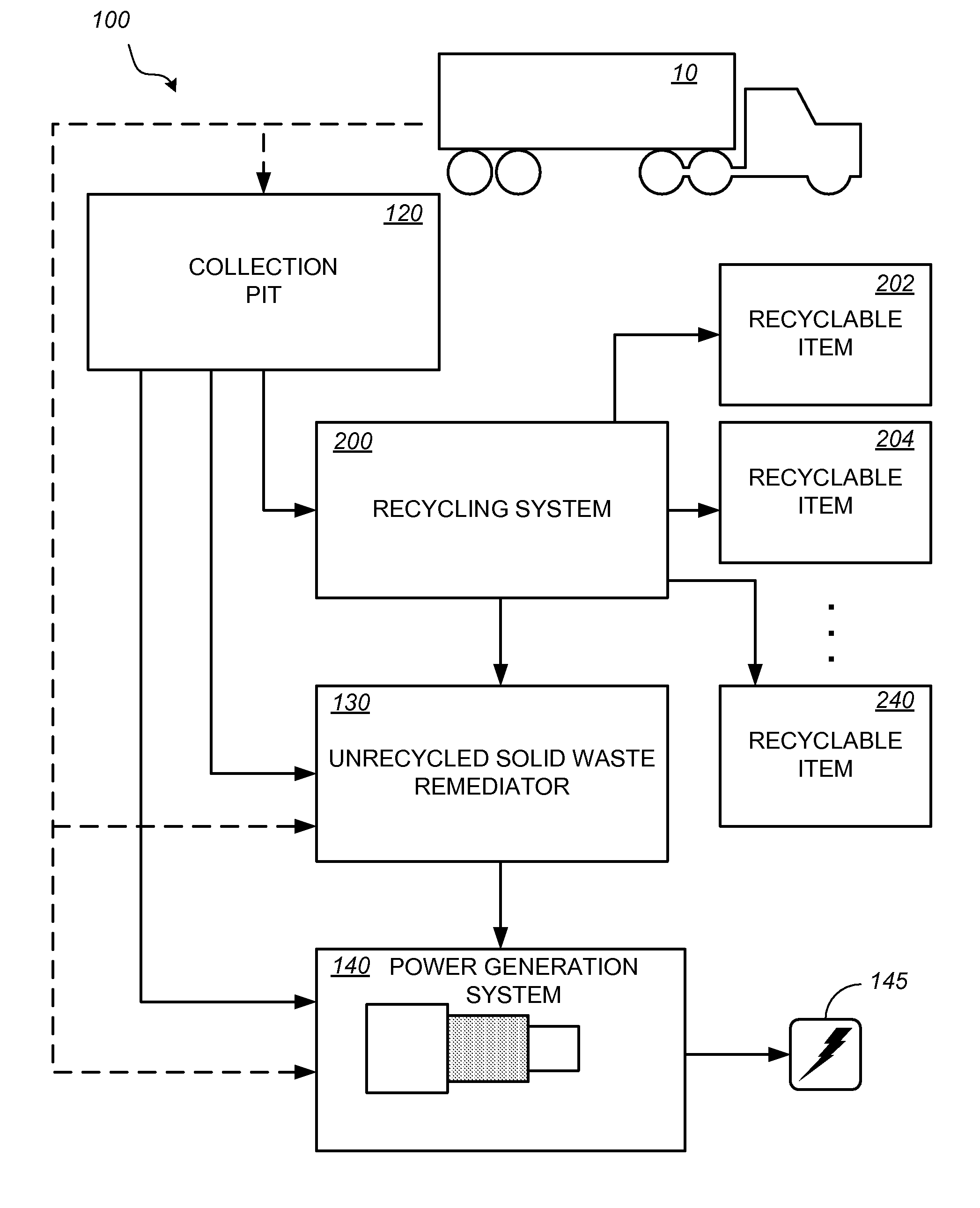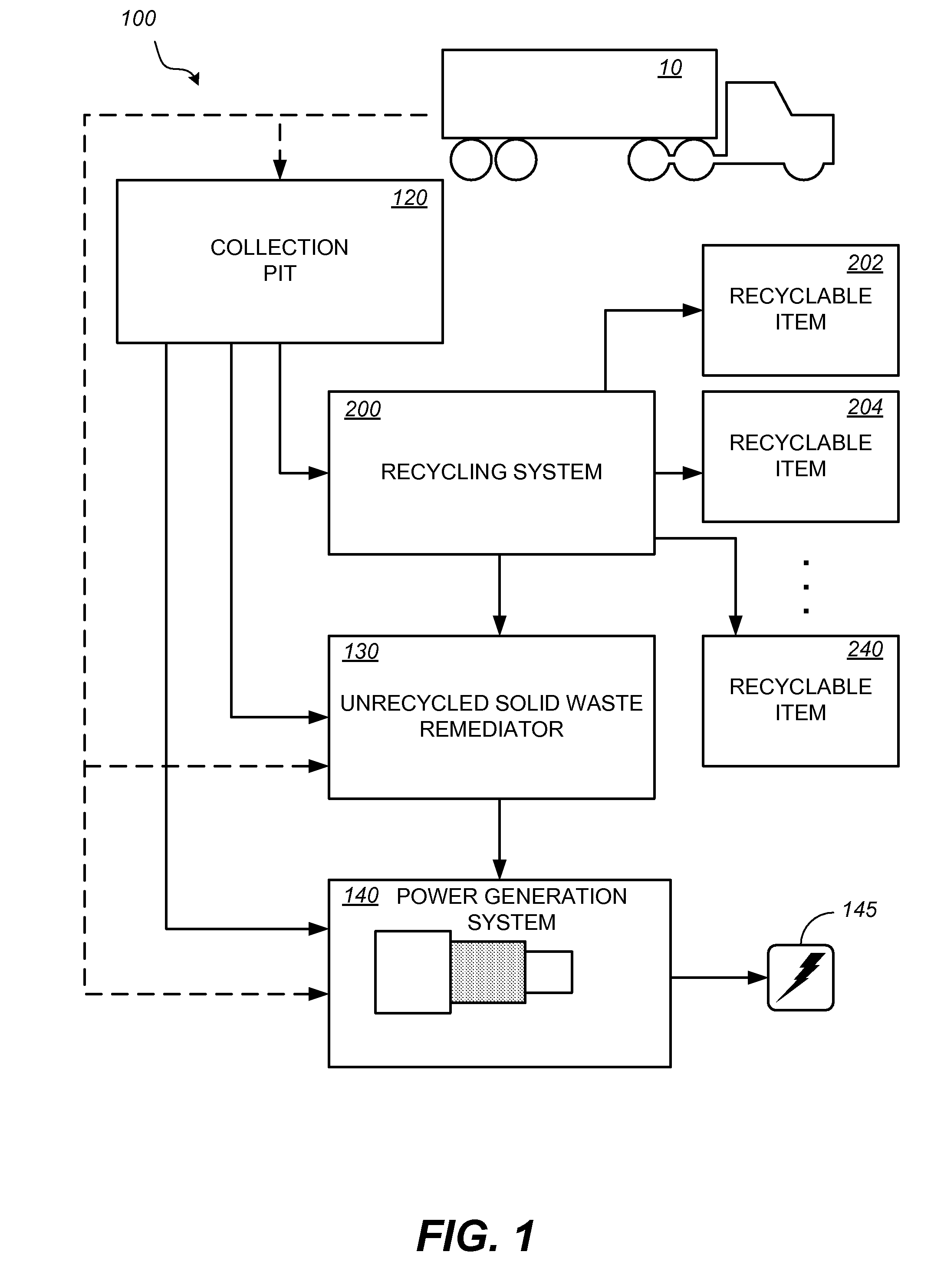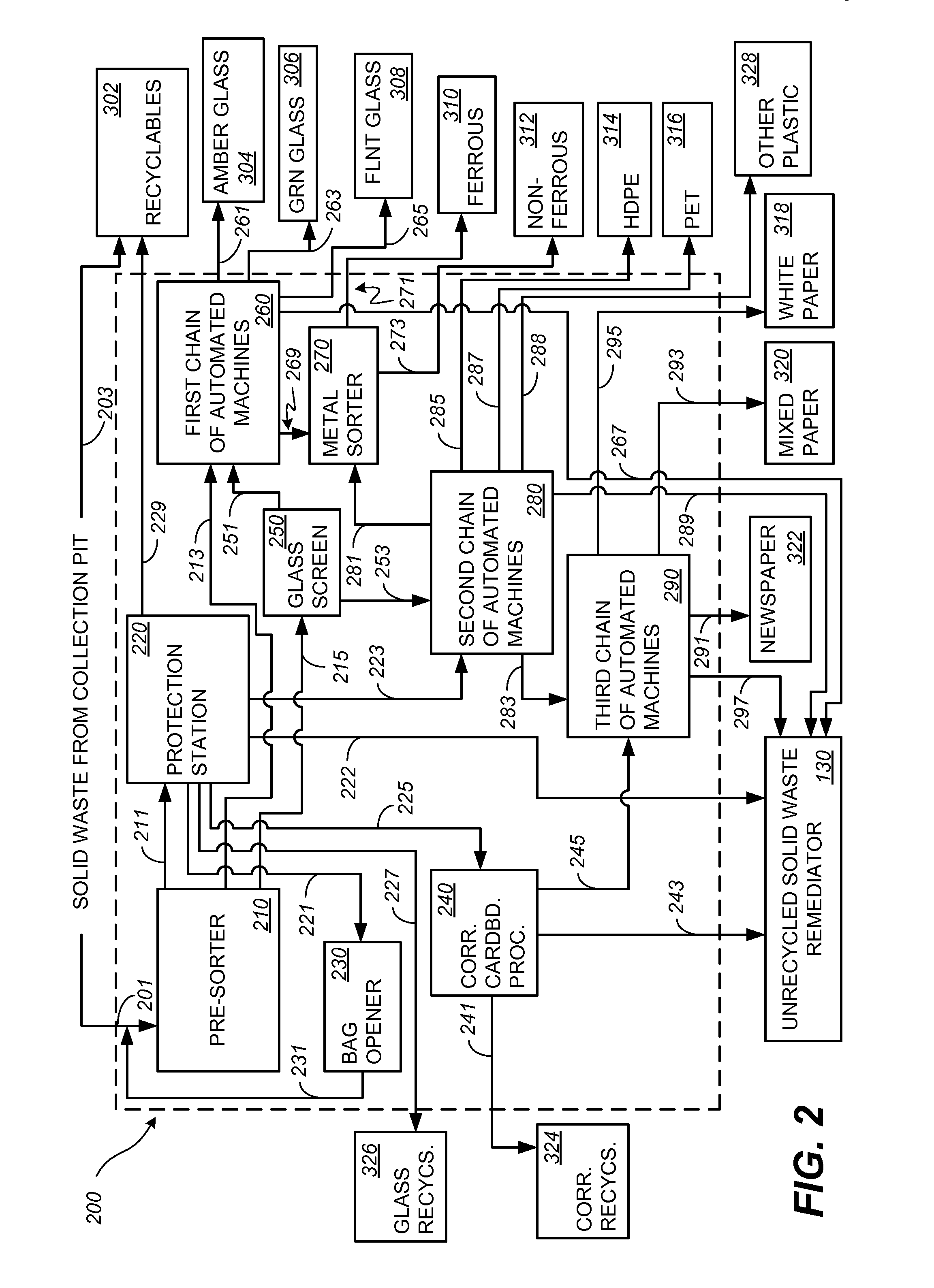Systems and Methods for Processing Municipal Solid Waste
a technology for municipal solid waste and processing methods, applied in the direction of instruments, lighting and heating equipment, combustion types, etc., can solve the problems of unsatisfactory work, difficult management of municipal solid waste, and high cost of home sorting and pick-up solutions
- Summary
- Abstract
- Description
- Claims
- Application Information
AI Technical Summary
Benefits of technology
Problems solved by technology
Method used
Image
Examples
Embodiment Construction
[0031]The summarized systems and methods are an extension of a growing trend associated with the treatment and handling of solid waste material commonly referred to as “resource recovery.” Resource recovery is intended to recover useful materials from raw municipal solid waste (MSW). To the extent that MSW is recycled / recovered, emissions will be diminished.
[0032]The present systems and methods include a new integrated MSW disposal process and reflect a paradigm that uses sophisticated automated equipment with minimal manpower to recycle materials commonly found in municipal solid waste including a significant amount of the fiber (paper), plastic, metals and glass. The organic remainder, and in some embodiments, non-recyclable items in the solid waste will be moved to a linked power generation system that will convert these items to electricity.
[0033]The present systems and methods can be used to promote the generation of a steady stream of remediated fuels to operate continuously o...
PUM
 Login to View More
Login to View More Abstract
Description
Claims
Application Information
 Login to View More
Login to View More - R&D
- Intellectual Property
- Life Sciences
- Materials
- Tech Scout
- Unparalleled Data Quality
- Higher Quality Content
- 60% Fewer Hallucinations
Browse by: Latest US Patents, China's latest patents, Technical Efficacy Thesaurus, Application Domain, Technology Topic, Popular Technical Reports.
© 2025 PatSnap. All rights reserved.Legal|Privacy policy|Modern Slavery Act Transparency Statement|Sitemap|About US| Contact US: help@patsnap.com



